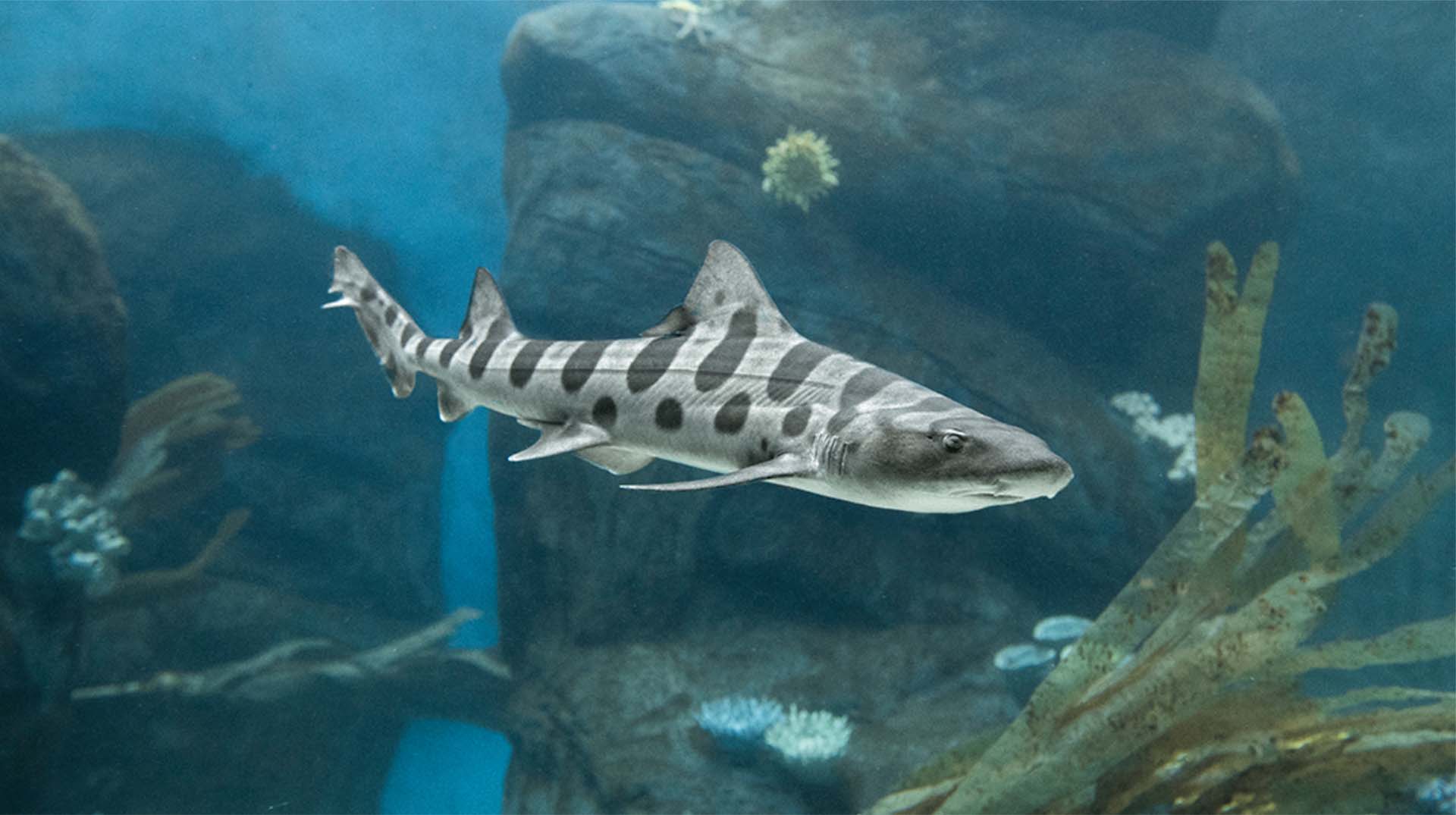What are Leopard Sharks (Triakis semifasciata)?
Leopard sharks (Triakis semifasciata) are one of the most common sharks in Southern California. They are only found in the Eastern Pacific Ocean from Coos Bay, Oregon to the Gulf of California, Mexico. Leopard sharks are carnivorous sharks that prowl the sandy sea floor for small prey such as invertebrates and small fish. (Click a picture below to expand)
What do Leopard sharks look like?
Leopard sharks typically grow to 4 to 5 feet but can grow up to 7 feet. Female Leopard sharks are normally larger than males. They sport several dark blemishes or spots throughout their back that overlay a brown-grey skin. Their mouths are located on the flat underside of their head which is perfect for bottom feeding. Leopard sharks belong to a class called Chondrichthyes which means that they do not have hard “bones” like we do, but have a “skeleton” made of cartilage which allows for them to be more flexible.
Habitat and Diet
Leopard sharks are only present in the Eastern Pacific Ocean from Oregon to the Gulf of California in Mexico and are not present anywhere else in the world. They are commonly seen patrolling the sandy bottoms of shallow coastal waters in nomadic groups. These sharks are also present in kelp forests and in estuaries and are rarely far from the coast, typically never straying into water deeper than 65 feet. They have, however, been tracked in waters that are 300 feet deep. While patrolling the coast they look for small prey such as invertebrates and fish. Leopard sharks love to eat fat innkeeper worms, small fish, clams, octopi, bat rays, and even other sharks! Although Leopard sharks are carnivorous, they do not pose any threat to humans and there have been no fatal attacks ever recorded.
Do they have any predators?
Unfortunately for them, yes they do. Leopard sharks are the prey to sea lions, other sharks, and humans. The meat of Leopard sharks has a reputation of being flavorful and as a result are a popular option for commercial and recreational fisherman. Despite being a tasty fish, Leopard shark meat contains traces of Mercury, a toxic element that that can be fatal if too much of it is consumed. Due to the potentially dangerous content within Leopard shark meat, a legal warning is prescribed to prevent over-consumption.
Leopard Shark Pups
Female Leopard sharks do not become fertile until around their tenth year of life, which is more than a quarter of their entire lives! Like humans, Leopard sharks give birth to live young! A pregnant Leopard shark will internally hold her eggs for 10 to 12 months and once ready, they give birth to a few dozen pups and can get up to 33 pups! Newly born pups are normally 8 to 9 inches and hatch within their mother’s stomach. This reproductive process is called ovoviviparous. Animal species that are ovoviviparous have fewer offspring than those that lay eggs and have a higher chance of survival once born.
Thanks for reading this article!
-Matt
Sources
https://animals.sandiegozoo.org/animals/leopard-shark
https://www.floridamuseum.ufl.edu/discover-fish/species-profiles/triakis-semifasciata/
https://www.montereybayaquarium.org/animal-guide/fishes/leopard-shark






4 Comments